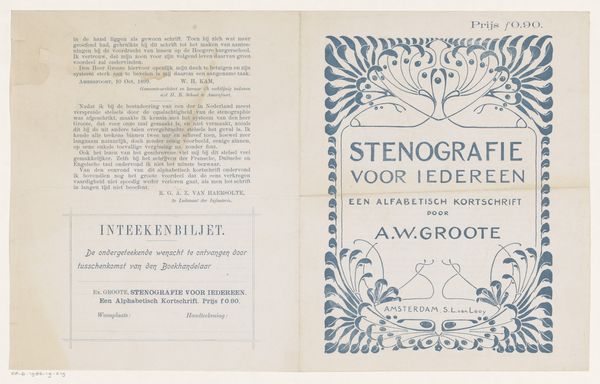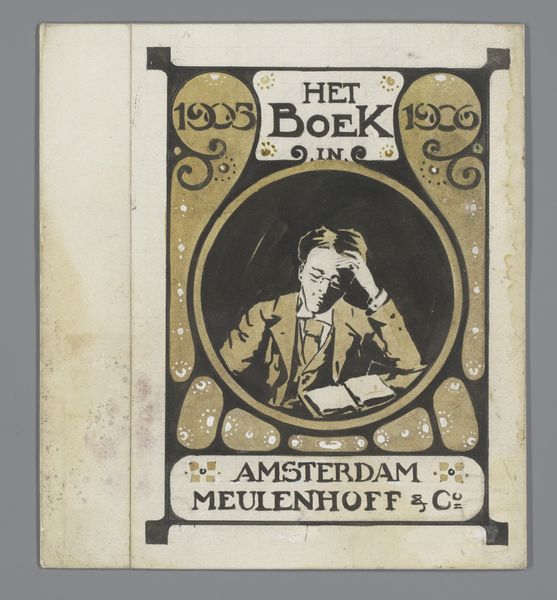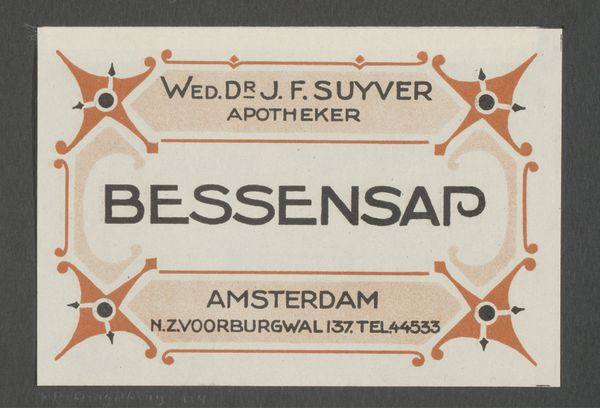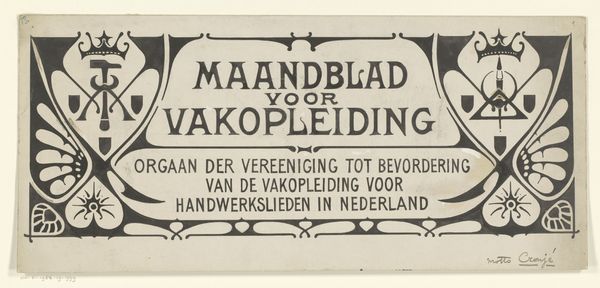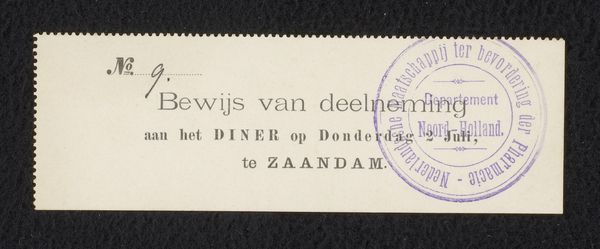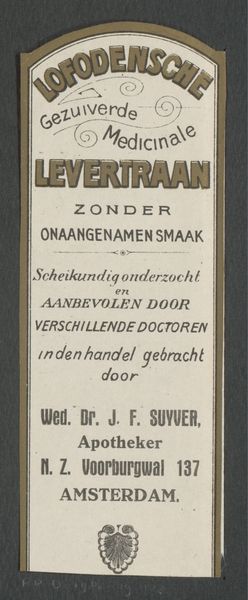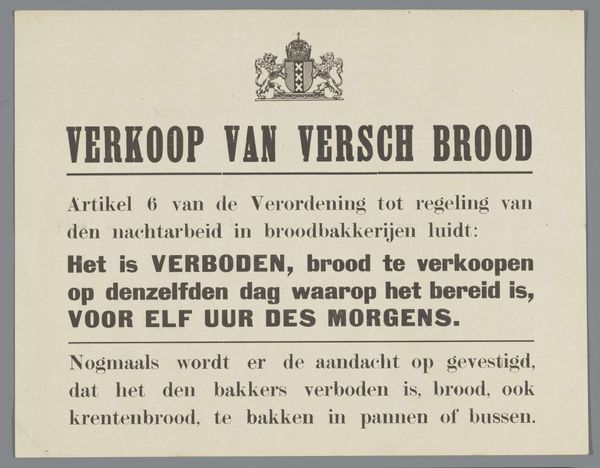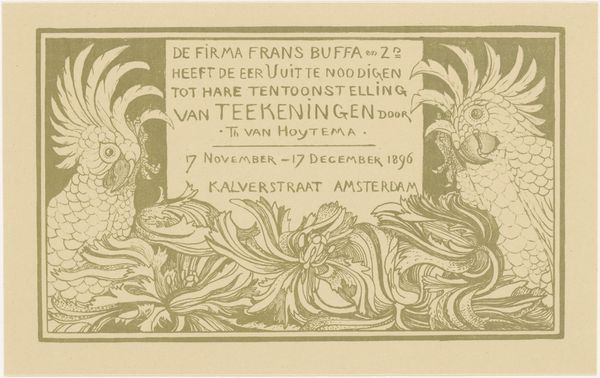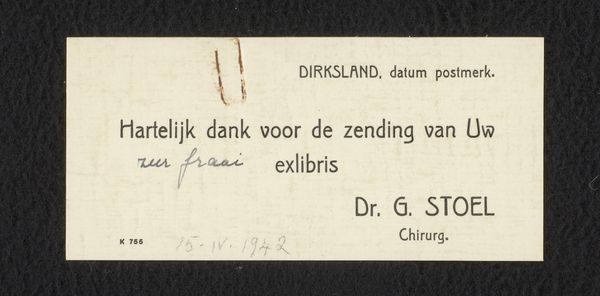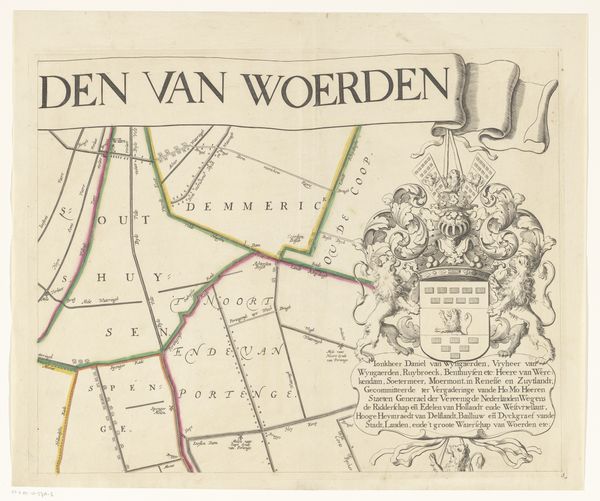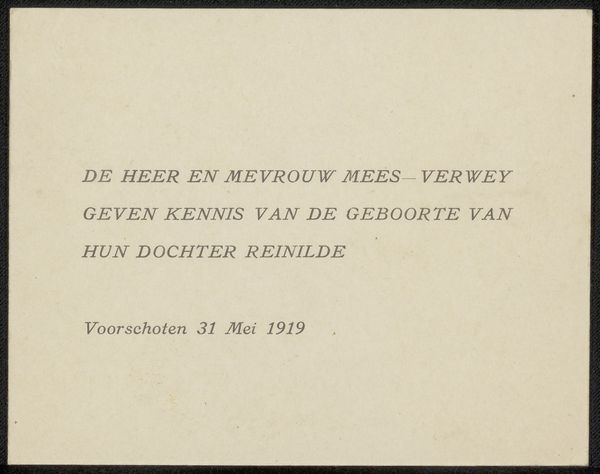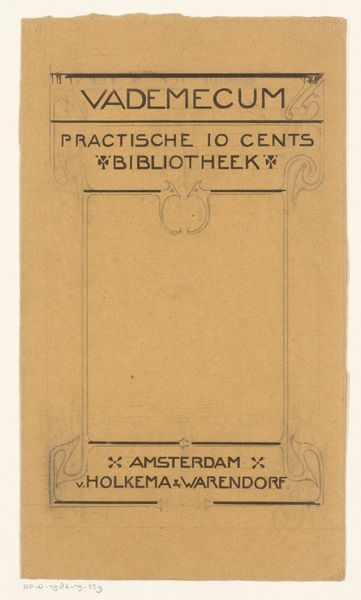
graphic-art, print, typography, poster
#
graphic-art
#
art-nouveau
# print
#
typography
#
poster
Dimensions: height 62 mm, width 98 mm
Copyright: Rijks Museum: Open Domain
Curator: Here we have an apothecary label, "Apothekersetiket voor slempstroop," dating roughly from 1884 to 1952. The work seems to be an anonymous print. Editor: Immediately, I notice the flat, graphic quality of the piece. It has a certain rustic charm, almost naive in its construction. It's quite contained and visually calming. Curator: The Art Nouveau stylistic elements are fascinating. Consider the typography; each letter serves as more than just a carrier of the word. The label also begs to examine the medical industrialization period and the accessibility of healthcare for the middle class. Who had access to these remedies and who was excluded? Editor: That’s a strong point, and I agree that the design also tells a lot about the method of production, what was cheap, effective and fast. It makes me consider what the base for the SLEMPSTROOP mixture actually was. What were they putting in there, what were the manufacturing processes and distribution models looking like? Curator: It also speaks to the role of women during this time, indicated by the “Wed.” suggesting it references the owner's marital status which reflects the social pressures put upon women and how their identities were often linked to their husband's statuses or lack thereof. Editor: Absolutely. The materials – likely paper and ink—are humble, everyday. It’s a useful product meant for common consumption which also leads one to wonder where such things were placed inside of pharmacies and apothecary’s and what other supplies it may have rested beside on the shelves. Curator: The design choices, although seemingly straightforward, actually reflect underlying cultural hierarchies and values about healthcare access, industrial advancements, and the place of women in professional environments. Editor: Reflecting on it, even such a seemingly simple artifact invites us to consider the historical means of production, of consumption and marketing of medicinal material. Curator: Indeed, and by looking at pieces such as this apothecary label, we get a glimpse into not just art and aesthetics, but into broader questions around inequality, healthcare, and access during an industrial revolution.
Comments
No comments
Be the first to comment and join the conversation on the ultimate creative platform.

